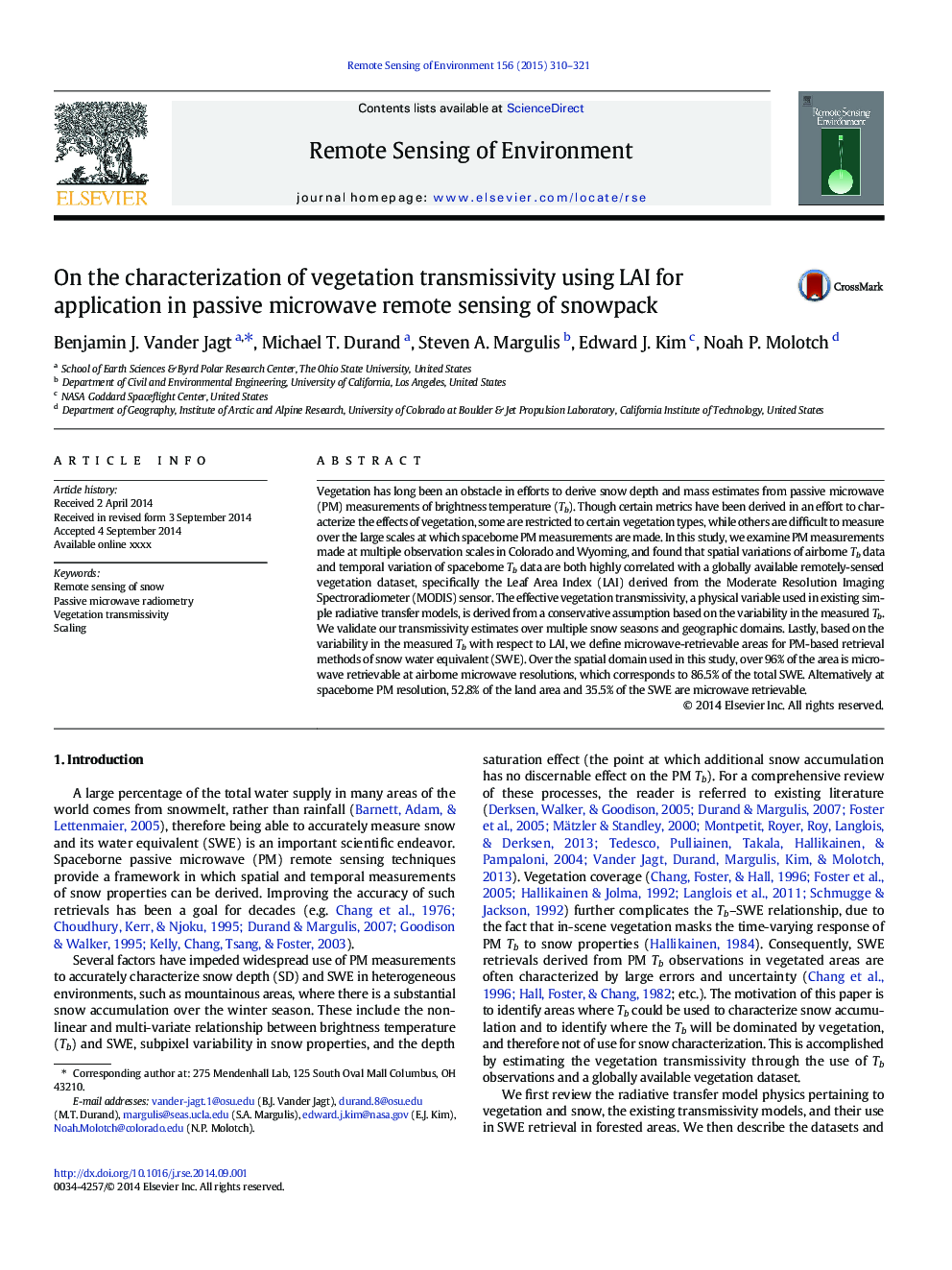| Article ID | Journal | Published Year | Pages | File Type |
|---|---|---|---|---|
| 6346534 | Remote Sensing of Environment | 2015 | 12 Pages |
Abstract
Vegetation has long been an obstacle in efforts to derive snow depth and mass estimates from passive microwave (PM) measurements of brightness temperature (Tb). Though certain metrics have been derived in an effort to characterize the effects of vegetation, some are restricted to certain vegetation types, while others are difficult to measure over the large scales at which spaceborne PM measurements are made. In this study, we examine PM measurements made at multiple observation scales in Colorado and Wyoming, and found that spatial variations of airborne Tb data and temporal variation of spaceborne Tb data are both highly correlated with a globally available remotely-sensed vegetation dataset, specifically the Leaf Area Index (LAI) derived from the Moderate Resolution Imaging Spectroradiometer (MODIS) sensor. The effective vegetation transmissivity, a physical variable used in existing simple radiative transfer models, is derived from a conservative assumption based on the variability in the measured Tb. We validate our transmissivity estimates over multiple snow seasons and geographic domains. Lastly, based on the variability in the measured Tb with respect to LAI, we define microwave-retrievable areas for PM-based retrieval methods of snow water equivalent (SWE). Over the spatial domain used in this study, over 96% of the area is microwave retrievable at airborne microwave resolutions, which corresponds to 86.5% of the total SWE. Alternatively at spaceborne PM resolution, 52.8% of the land area and 35.5% of the SWE are microwave retrievable.
Related Topics
Physical Sciences and Engineering
Earth and Planetary Sciences
Computers in Earth Sciences
Authors
Benjamin J. Vander Jagt, Michael T. Durand, Steven A. Margulis, Edward J. Kim, Noah P. Molotch,
